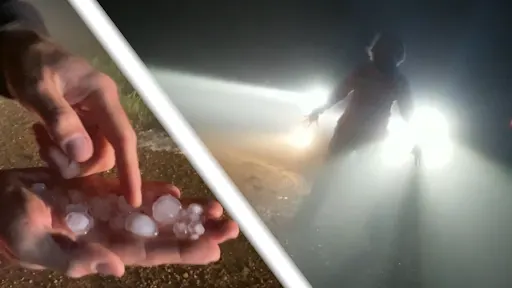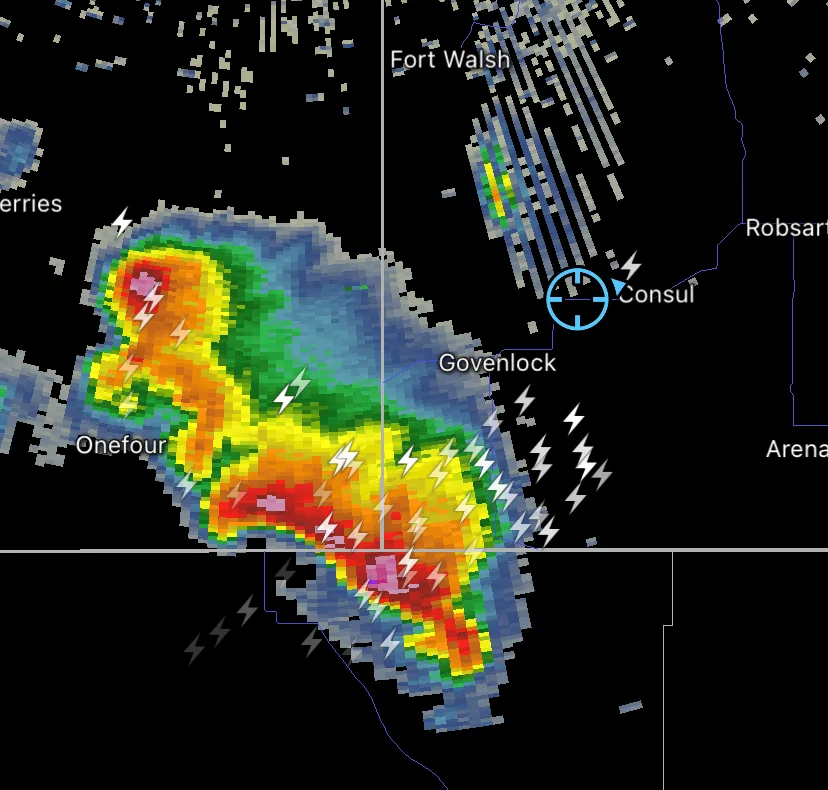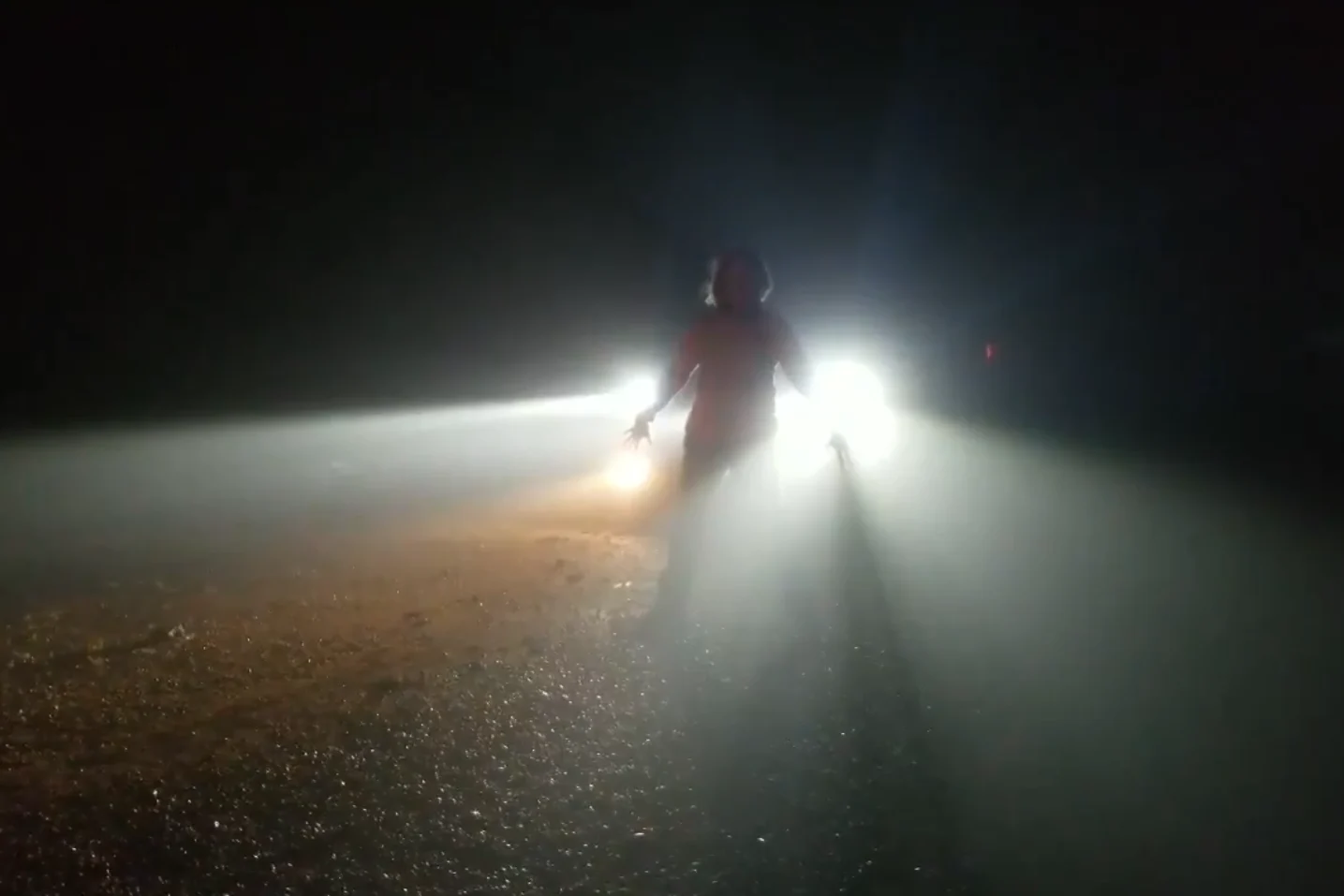
The science behind the Prairies' Twilight Zone "hail fog"
Straight out of a Twilight Zone episode, storm chasers Kyle Brittain and Jaclyn Whittal could barely see one other's vehicle when a large swath of hail fog settled in. Find out how this creepy weather phenomena occurs.
It was a typical Prairie chase day with a warm front stretched along Montana/Alberta border.
If we had any real hope of encountering any of those famous Prairie storms, it was integral that the warm front lifted far enough to our north, taking the dense stratus cloud layer that we were experiencing with it and allowing for some clearing.
It did just that, and the effects were rapid. Temperatures quickly went from the low double-digits to the mid-20s with the relative humidity, at a level rare for the Canadian Prairies, with the sun nicely destabilizing the environment.

The radar showed signs of a sizeable storm cell, with high reflectivity, which would indicate the presence of large hail – which indeed, was reported later right in the town of Consul, Sask.
After we were finished shooting some cloud-to-ground lightning bolts from our cars, we went back to have a look, hoping to collect some large hailstones to measure.
But once we got there, we were in for much more than we expected, beginning with a dense layer of fog that descended upon us, thick enough that I could barely see fellow storm chaser Kyle Brittain's car in front of me.

Known to meteorologists as "hail fog," it's actually not uncommon – it's just that you don't always get to witness the fog layer since, many times, hail will fall in an open field where you're not driving.
In this case, the hail fell and collected perfectly along the road we were on. I've been chasing for years, and had never yet seen anything like this very spooky phenomenon.

So how do we end up with bona fide fog in a part of the country that's more arid than average?
What happens is this: The hail/ice immediately cools the air around it at ground level, and it only takes a shallow layer to cool to its dewpoint, saturating the air with moisture and allowing the highly localized fog bank to form.
That fog can happen without notice, so be careful when driving near a hail swath. You may think you've driven right into the Twilight Zone!











